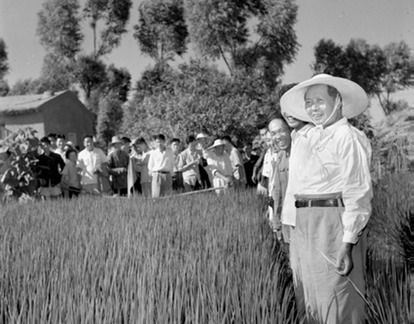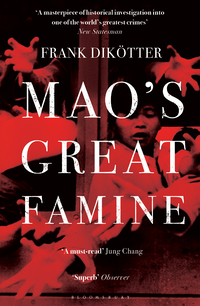V V, Business Standard, 2 October 2010
A single death is a tragedy, a million deaths is a statistic - attributed to Stalin
Nobel Laureate Amartya Sen made two points in his seminal study, Poverty and Famines, based on the Bengal Famine (1943) and other examples from the world. First, all famines were essentially man-made mass hoarding because of widespread rumours and poor distribution; they were not caused by food shortage. In fact, Sen said, “The Raj was fairly right in its estimation of overall food availability but disastrously wrong in its theory of famines.” Second, famines do not occur in functioning democracies because democratic governments have to respond to the needs of the people or else get thrown out. If you had any lingering doubts about Sen’s closely argued study, it would be dispelled by Frank Dikötter’s Mao’s Great Famine: The History of China’s Devastating Catastrophe, 1958-62 (Bloomsbury, Special Indian Price Rs 650) where “45 million people died unnecessarily between 1958 and 1962… in one of the most deadly mass killings of human history.”
Dikötter begins with first principles. The term “famine” or “Great Famine”, he says, is often used to describe these four to five years of the Mao era “but the term fails to capture the many ways in which people died under radical collectivisation”. Based on over a thousand archival documents collected over several years in dozens of Party archives spread across the country, the book demonstrates how coercion, terror and systematic violence were the foundation of the Great Leap Forward in which 2.5 million were simply tortured to death or summarily killed.
“Other victims were deliberately deprived of food and starved to death. Many more vanished because they were too old, weak or sick to work — and hence unable to earn their keep... People were killed selectively because they were rich, because they dragged their feet, because they spoke out or simply because they were not liked, for whatever the reason, by the men who wielded the ladle in the canteen.” The book is divided into six Parts: The Pursuit of Utopia; Through the Valley of Death; Destruction; Survival; The Vulnerable; and Ways of Dying, which are rounded off with an Epilogue, an essay on the Sources and Select Bibliography. The first two parts explain how and why the Great Leap Forward unfolded, identifying the key turning points and charting the ways in which the lives of millions were shaped by the decisions taken by a select few at the top.
Part 3 looks at the scale of destruction, from agriculture, industry, trade and housing to the natural environment. Part 4 shows how the grand plan was transformed by everyday strategies of survival by ordinary people to produce something that nobody intended and few could quite recognise. Part 5 looks at the lives of children, women and the elderly, and Part 6 traces the ways in which people died, from accidents, disease, torture, murder and suicide to starvation. Here is a horror story from start to finish that you find hard to believe but are compelled to do so simply because of the depth and range of the research that has gone into the making of the study.
There is a well-known dictum that E H Carr laid down in his work, What is History?, on the reading of history: know the historian before you read the history. Dikötter is a professor at the School of Oriental and African Studies, London, and of humanities at the University of Hong Kong. He is a Chinese-speaking expert (which explains why he had access to Central Party archives in Beijing and the districts) whose work has been endorsed by Jung Chang, author of two bestsellers — Wild Swans and Mao: The Unknown Story. If credential is one of the criterion to judge the authenticity of scholarship, this alone would be sufficient to judge whether the bizarre story of the Great Leap and the Cultural Revolution told here rings true or not.
Just how bizarre the whole experiment to catch up with the West was can be seen from these facts that are recounted in the first two parts: Utopia and the Valley of Death, which was guided by Mao’s philosophy that “when there is not enough to eat, people starve to death. It is better to let half the people die so that the other half can eat their fill”. He went on to add that anyone who questioned his policies was a “Rightist” that was applied to 13 million Party members. In his attempt to establish communism overnight, the most catastrophic exercises in utopianism was conducted. Impossible targets were fixed and when these fell short, Mao blamed it all on class enemies. The forced collectivisation of agriculture and the apparatus needed to keep it in place resulted in 45 million deaths.
The failure of the Leap Forward was followed by the Great Cultural Revolution with its slogan “bombard the headquarters”. This was truly revolutionary for it toppled many of Mao’s comrades and destroyed the institutional base of the Chinese Communist Party. It also marked a departure from the norm of civilised behaviour, producing cruelty and oppression on a horrific scale. Millions of Chinese suffered; many behaved pitifully and disgracefully.
When you read the detailed accounts of this organised madness, there is just one question that comes to mind. How did so many western intellectuals believe that Mao’s attempt to build a new man would reinvent society for the good of all, was a unique experiment that had to be commended when all the evidence indicated that something was so obviously crazy? Were they also blinded by the tyranny of reason?

